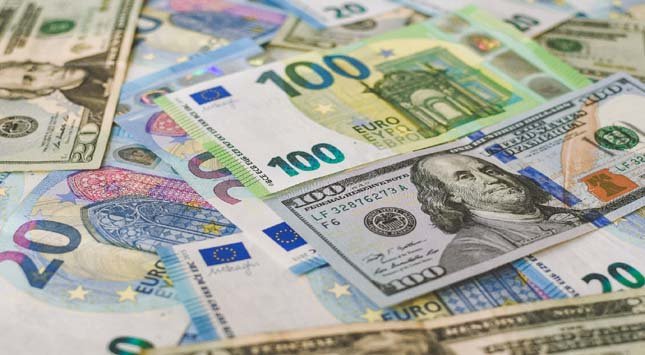
Different countries utilise different forms of money all around the world. Many countries issue their own currency.
This money is backed by the government and is commonly referred to as “legal tender.” Legal tender refers to money that must be accepted as payment in that nation.
Tradable currencies directly connect to the world of foreign exchange. Forex, in this case, is the largest and most successful market for currency trading. On average, trillions of dollars are traded in this industry regularly.
If you are looking to trade or invest, keep reading. We have listed the best tradable currencies on the market currently.
Exchange Rates
When you travel to another country, you generally want to get some cash from local money. You can do this by exchanging your money for part of that country’s money. This is done using exchange rates.
For example, if you were in Europe and wanted to exchange US dollars for 100 euros. If the exchange rate of 1 euro equals 1.3 US dollars, you would have to give them 130 US dollars to get 100 euros.
You may check the latest exchange rates between different foreign currencies on the internet. However, depending on where you go, exchange rates will fluctuate slightly. For making the exchange, various banks or organizations may charge varying fees and rates.
List of the Best Tradable Currencies
Currencies are the basic requirement for running an import/export business. The next thing you need is a successful eCommerce platform. To build your venture, connect with YourDigiLab. It is the right place to enjoy website development services.
Take a look at these best currencies for trading in the market.
U.S. Dollar (USD)
The first and foremost in forex trading is the US Dollar. It is also referred to as the greenback all over the globe. In terms of trade, USD is the easiest to import/export throughout the global market.
Besides being a powerhouse in international trade, it is the world’s basic ‘reserve currency.’ According to reports, it is held by almost every institute and central bank in the world.
Moving on, it is used as the standard currency for most commodities. For instance, gold, silver, copper, and crude oil are priced in USD. This currency is a crucial factor in foreign exchange for its global acceptance.
It often acts as a benchmark for other countries while they work to taper their currency to the value of the U.S. dollar.
The Euro (EUR)
The second most traded in the foreign exchange is the Euro. It is the official currency of the European Union (EU) and issued by the European Central Bank (ECB).
Catering to most countries in the Eurozone, several European nations along with Africa taper their currencies to the EUR. It is also a step towards the stabilization of the exchange rate. For more, you can consider it as the world’s second successful reserve currency.
On a daily basis, it has an average volume of approximately 1.1 trillion U.S. dollars. In addition, it roughly creates up to 20% of worldwide reserves.
The Japanese Yen (JPY)
The third most traded in the foreign exchange is the Japanese Yen. It is the official currency of Japan that accounts for over 554 billion US dollars every day. Also, it is the third most popular reserve currency that roughly creates up 5% of global reserves.
Besides being issued by the Bank of Japan (BoJ), it is the easiest traded Asian currency on the market. The value of Yen depends on the Japanese economy. As per the manufacturing sector of this nation, JPY rises as drops. For instance, electronics, vehicles, machine tools, textiles, ships, and more.
Moving on, Yen is popular in the forex world for carry-trade. Folks borrow it at a negligible price and invest it in higher currencies.
The Great British Pound (GBP)
The fourth most traded in the foreign exchange is the Great British Pound. It is also known as pound sterling in the market. Regardless of being a part of the European Union, the United Kingdom has a different official currency.
Similar to the Japanese Yen, the value of the GBP depends on the British economy. It also serves as a benchmark for several nations. This currency holds a high value all over the world. As a result, it is one of the larger reserve currencies.
On a daily basis, it has an average volume of approximately 422 billion U.S. dollars. In addition, it roughly creates up to 4.5% of worldwide reserves.
Australian Dollar (AUD)
The fifth most traded in the foreign exchange is the Australian Dollar. Besides being issued by the Reserve Bank of Australia (RBA), it is the sixth most popular reserve currency.
Moving on, the value of AUD is greatly impacted by import and export among businesses. Australia is known to export copper, iron, and coal while importing oil. Its currency, therefore, depends on the trading patterns.
On a regular basis, it has an average volume of approximately 223 billion U.S. dollars. In addition, it roughly creates up to 1.8% of worldwide reserves.
Canadian Dollar (CAD)
The sixth most traded in the foreign exchange is the Canadian Dollar. It is the official currency of Canada and is often called the Loonie. Also, it serves as the fifth most popular reserve currency on the foreign exchange market.
CAD is the first global commodity currency influenced by the value of metals, minerals, and crude oil. In the trading world, Canada works in collaboration with the United States. Thus, the Canadian economy is highly impacted by any changes in the U.S. economy.
Besides being issued by the Bank of Canada (BoC), it holds an everyday average volume of 166 billion US dollars. Also, it roughly creates up to 2.02% of worldwide reserves.
The Bottom Line
With the growth of financial markets, the role of foreign exchange is getting popular. Currencies are contributing greatly to the import and export of businesses.
While every tradable currency offers a set of features, the major ones are the U.S dollar, the Euro, the Yen, the Great British Pound, the Australian Dollar, and the Canadian Dollar.





